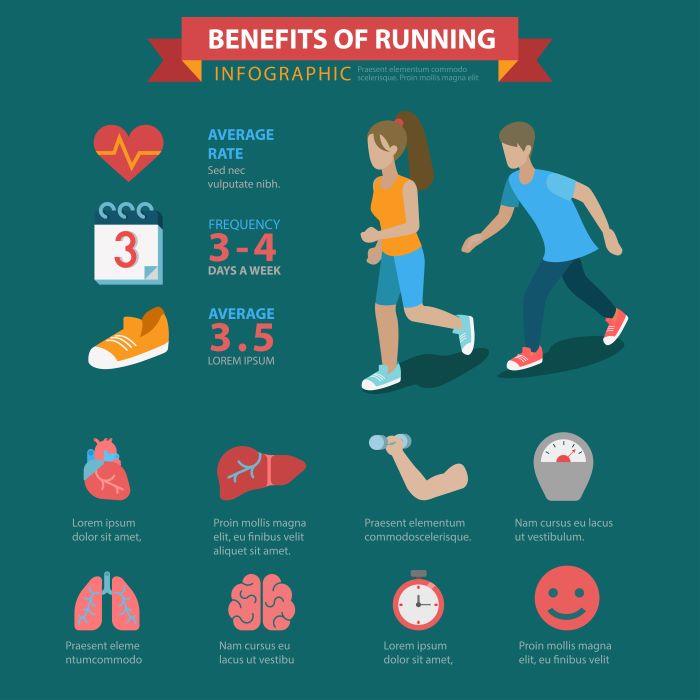As an intermediate runner, your training needs differ significantly from those of beginners or advanced runners. Understanding these unique requirements is essential to create the best half marathon training plan for intermediate runners. This stage is marked by a solid foundation of running experience, enabling you to build on your skills and distance.
To effectively cater to your needs, consider the following factors:
- Increased Mileage: Intermediate runners should gradually increase their weekly mileage to enhance endurance without risking injury. Aim for a weekly total that challenges you while still allowing for recovery.
- Varied Workouts: Incorporating a mix of long runs, speed workouts, and recovery runs keeps your training engaging and effective. This variety helps improve both speed and stamina.
- Recovery and Nutrition: As you push your limits, your body will require more recovery time and proper nutrition. Focus on a balanced diet rich in carbohydrates, proteins, and healthy fats to fuel your training.
By recognizing these aspects, you can tailor your training plan to better suit your capabilities and goals. Visit our website to learn more and get started today! Click here.
Key Components of a Successful Training Plan

Creating a successful training plan requires a thoughtful approach, especially for intermediate runners looking to tackle a half marathon. The following key components are essential to ensure your training is effective, balanced, and geared towards achieving your goals:
- Long Runs: These are crucial for building endurance. Schedule a weekly long run, progressively increasing the distance to simulate race conditions. This will prepare your body for the challenge of 13.1 miles.
- Speed Work: Incorporating speed intervals or tempo runs helps improve your pace and overall race performance. Aim for one or two speed sessions each week to enhance your cardiovascular fitness.
- Rest and Recovery: Recovery days are just as important as training days. They allow your muscles to repair and grow stronger. Ensure your plan includes rest days and lighter training weeks to prevent burnout and injury.
- Cross-Training: Adding cross-training activities such as cycling, swimming, or strength training can improve your overall fitness and reduce the risk of injury by working different muscle groups.
- Nutrition: Fueling your body correctly is vital. Focus on a diet rich in whole foods, and consider fueling strategies for long runs to maintain energy levels.
By integrating these key components into your training regimen, you will set a solid foundation for a successful half marathon experience.
Weekly Training Schedule for Half Marathon

Designing a weekly training schedule for a half marathon is crucial for intermediate runners aiming to balance workouts, recovery, and rest. Here’s a sample structure that can be adapted based on individual fitness levels and commitments:
- Monday: Rest Day
Start the week with a well-deserved rest day to allow your body to recover from the previous week’s training. - Tuesday: Speed Work
Incorporate a speed session, such as 5-6 intervals of 800 meters at a fast pace, with equal time for recovery between intervals. This helps boost your speed and aerobic capacity. - Wednesday: Easy Run
Go for a 3-5 mile easy run at a conversational pace. This will help you recover while maintaining your running routine. - Thursday: Tempo Run
Engage in a tempo run consisting of a 1-mile warm-up, followed by 3-4 miles at a comfortably hard pace, and finish with a 1-mile cool down. - Friday: Cross-Training
Opt for a cross-training activity such as cycling, swimming, or yoga for about 30-60 minutes to build strength and flexibility without the impact of running. - Saturday: Long Run
Dedicate this day to your long run, starting with 8-10 miles and gradually increasing the distance each week. This is essential for building endurance. - Sunday: Recovery Run
Finish the week with a short, easy recovery run of 2-4 miles to help loosen up your legs and promote blood flow.
This structured weekly training schedule can help intermediate runners effectively prepare for their half marathon while allowing for recovery and adaptation.
Essential Tips for Injury Prevention

Injury prevention is paramount for intermediate runners training for a half marathon. Implementing the right strategies can help you stay on track and perform at your best. Here are some essential tips:
- Warm Up Properly:
Always begin your training sessions with a proper warm-up. Engage in dynamic stretches and light jogging for at least 10-15 minutes to prepare your muscles and joints for the workout. - Listen to Your Body:
Pain is your body’s way of signaling distress. If you experience persistent pain, do not ignore it. Adjust your training intensity or take a break to allow for recovery. - Invest in Quality Footwear:
Wearing appropriate running shoes that offer good support and cushioning is vital. Replace your shoes every 300-500 miles to prevent injuries related to wear and tear. - Incorporate Strength Training:
Building strength in your core, hips, and legs can significantly reduce the risk of injuries. Include strength training at least twice a week, focusing on exercises that enhance stability and flexibility. - Cross-Train:
Incorporating activities such as cycling, swimming, or yoga can help improve overall fitness without the repetitive impact of running, providing a break for your joints. - Stay Hydrated and Nourished:
Adequate hydration and nutrition play a critical role in injury prevention. Ensure you’re consuming a balanced diet rich in protein, carbohydrates, and healthy fats to support your training. - Gradually Increase Mileage:
Follow the 10% rule: increase your weekly mileage by no more than 10% to allow your body time to adapt and avoid overuse injuries.
By integrating these injury prevention strategies into your training plan, you can enhance your performance while minimizing the risk of setbacks.
Nutrition Strategies for Optimal Performance
Nutrition plays a pivotal role in the performance of intermediate runners, especially when preparing for a half marathon. Fueling your body with the right nutrients can enhance endurance, speed up recovery, and improve overall performance. Here are some effective nutrition strategies:
- Balance Your Macronutrients:
Focus on a well-balanced diet that includes a mix of carbohydrates, proteins, and fats. Carbohydrates are essential as they provide the primary source of energy during long runs. Aim for about 60-70% of your daily intake to come from carbs, while protein should make up about 15-20% to support muscle repair. - Pre-Run Nutrition:
Before your runs, particularly long ones, consume a meal rich in complex carbohydrates and moderate in protein about 2-3 hours in advance. Options like oatmeal with fruit or a whole-grain sandwich can provide sustained energy. - Hydration is Key:
Staying hydrated is critical for optimal performance. Drink water consistently throughout the day and consider electrolyte drinks during long runs to replenish lost minerals. Aim to drink at least 16-20 ounces of fluid a few hours before running. - Post-Run Recovery:
After your run, refuel your body with a combination of carbohydrates and protein. Consuming a snack or meal within 30 minutes post-exercise is ideal. A smoothie with yogurt and fruit or a protein bar can help replenish glycogen stores and aid muscle recovery. - Experiment with Race Day Nutrition:
During your training, test different foods and drinks to determine what works best for you on race day. Practice your fueling strategy to avoid gastrointestinal issues during the event. - Consider Supplements Wisely:
If you struggle to meet your nutritional needs through food alone, consider consulting a professional about supplements. Options like protein powders or omega-3 fatty acids can provide added benefits, but should not replace whole foods.
By adopting these nutrition strategies, you can optimize your performance, enhance recovery, and ultimately achieve your half marathon goals.
Preparing for Race Day Success
.jpg)
As the race day approaches, ensuring that you are fully prepared can make a significant difference in your performance and enjoyment of the event. Here are some key strategies to set yourself up for success on race day:
- Plan Your Logistics:
Familiarize yourself with the race route, start time, and location. Ensure you know how to get to the venue, where to park, and the check-in process. Arriving early can help alleviate stress. - Prepare Your Gear:
Lay out your race gear the night before, including your running shoes, clothing, and any accessories like a watch or hydration pack. Don’t forget to pin your race bib to your shirt or shorts ahead of time. - Stick to Your Routine:
On race day, follow the same pre-run routine you practiced during your training. This includes your breakfast choice, warm-up exercises, and hydration strategy. Consistency will help you feel more at ease. - Stay Calm and Positive:
It’s natural to feel nervous, but maintaining a positive mindset can help you channel those nerves into excitement. Visualize your success and remind yourself of the hard work you’ve put into your training. - Know Your Pace:
Plan your race pace based on your training runs. Start at a comfortable pace and avoid the temptation to go too fast at the beginning. Utilize a watch or a running app to help you maintain your target pace throughout the race. - Have a Post-Race Plan:
Think about how you’ll celebrate after finishing the race. Whether it’s a favorite meal, spending time with friends, or enjoying a well-deserved rest, having something to look forward to can motivate you throughout the race.
By implementing these strategies, you will enhance your chances of achieving your personal best and enjoying the race experience. Visit our website to learn more and get started today!


